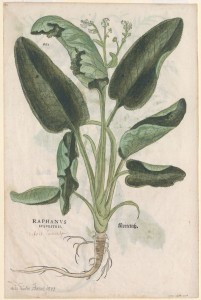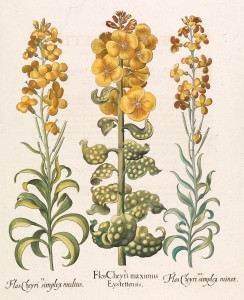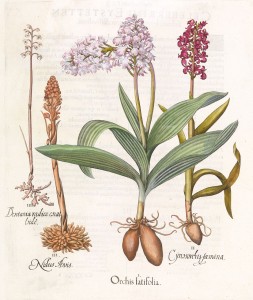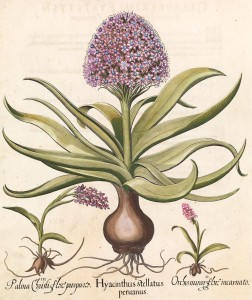A blossoming gift: hand-coloured engravings from the Hortus Eystettensis
The Baillieu Library Print Collection has bloomed with a gift through the Cultural Gifts Program from Ronald Alfred Walker of 12 hand-coloured engraved plates from Basil Besler’s florilegium Hortus Eystettensis, originally published in 1613.
Besler was both an apothecary and a botanist. In his lifetime (1561-1629), the system of scientific classification that we know today had not been fully developed. In this book the specimens were grouped by their season of flowering or fruiting, which resulted in some surprising pairings. This organisational principle followed the arrangement of the garden on which the book was based, created by Johann Konrad von Gemmingen, bishop and prince of Eichstätt in Bavaria (the title of the book means ‘Garden of Eichstätt’).
What is a florilegium?
A florilegium differs from a herbal or herbarium, which is typically a collection of dried botanical specimens with descriptions. One of the foremost herbals is Leonhart Fuchs’ De Historia Stirpium which was printed in Basel in 1542. Fuchs (1501- 1566) was a physician and a field botanist. His book comprised 519 large woodcuts of some 400 native German plants.
Veit Specklin after Albrecht Meyer, Radish (1542), hand coloured woodcut from De Historia Stirpium
Whereas, a florilegium is traditionally a description of living ornamental garden plants, one of the first examples appearing in 1608 was stunningly illustrated. The Hortus Eystettensis then followed in 1613 with its 367 striking engravings after Besler’s drawings, and some copies of the book were painstakingly coloured by hand.
Some specimens from Hortus Eystettensis were singular examples from the region, such as the Eichstätt yellow wallflower, which is now unknown. The morphological characteristics of the thick stem and unusual pocked leaves suggest it may have been affected by a virus, fungus or insect.
Bail Besler, Eichstätt yellow wallflower (Flos Cheyri maximus), (c.1613), hand coloured engraving from Hortus Eystettensis
Of the plates that describe orchids, specimen two is an example of the rare stinking orchid (Ochidaceae) found in grassy locations in Europe. As later scholars note, one of its subspecies actually has a pleasant fragrance!
Basil Besler, Purple orchid (Orchis Iatifolia), (c.1613), hand coloured engraving from Hortus Eystettensis
Two orchid specimens are depicted alongside the Peruvian squill (Liliaceae). In this plate a later hand has (rather clumsily) added more pigment to the engraving. The original and refined hand-colouring of the flowers have been daubed over with pink, white blue and purple paint. Perhaps an admirer was attempting to heighten the already powerful beauty of the blooms. To an extent this plate demonstrates both the popularity of the collection of book illustrations and their desirability as objects of beauty.
Basil Besler, Peruvian squill (Hyancinthus stellatus peruanus), (c.1613), hand coloured engraving from Hortus Eystettensis
Kerrianne Stone (Curator, Prints)
The Besler florilegium: plants of the four seasons introduction and commentaries on the plates by Gérard G. Aymonin; foreword by Pierre Gascar; translated from the French by Eileen Finletter and Jean Ayer, New York: H.N. Abrams, 1989
Categories
- Uncategorised
- Prints




Leave a Reply